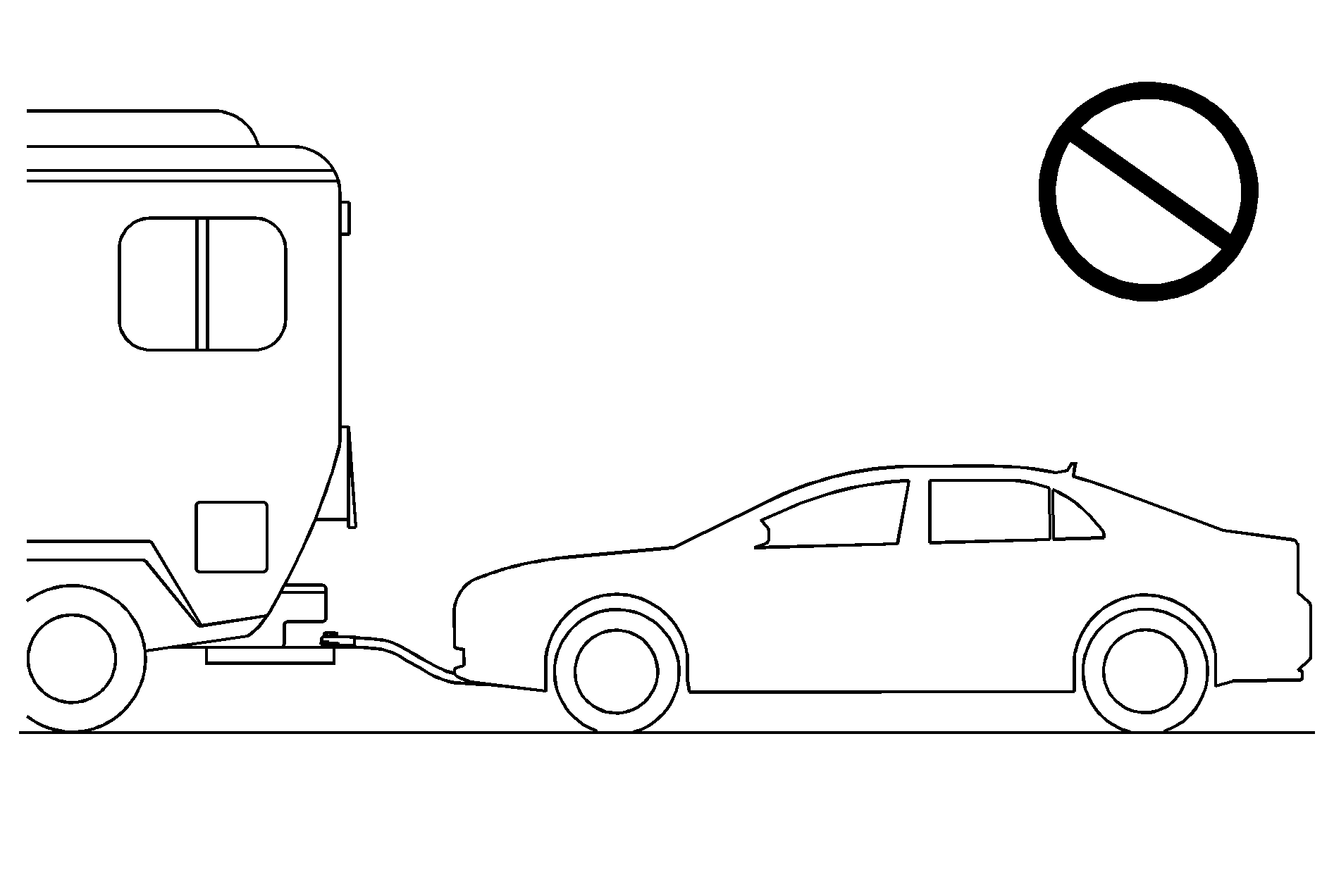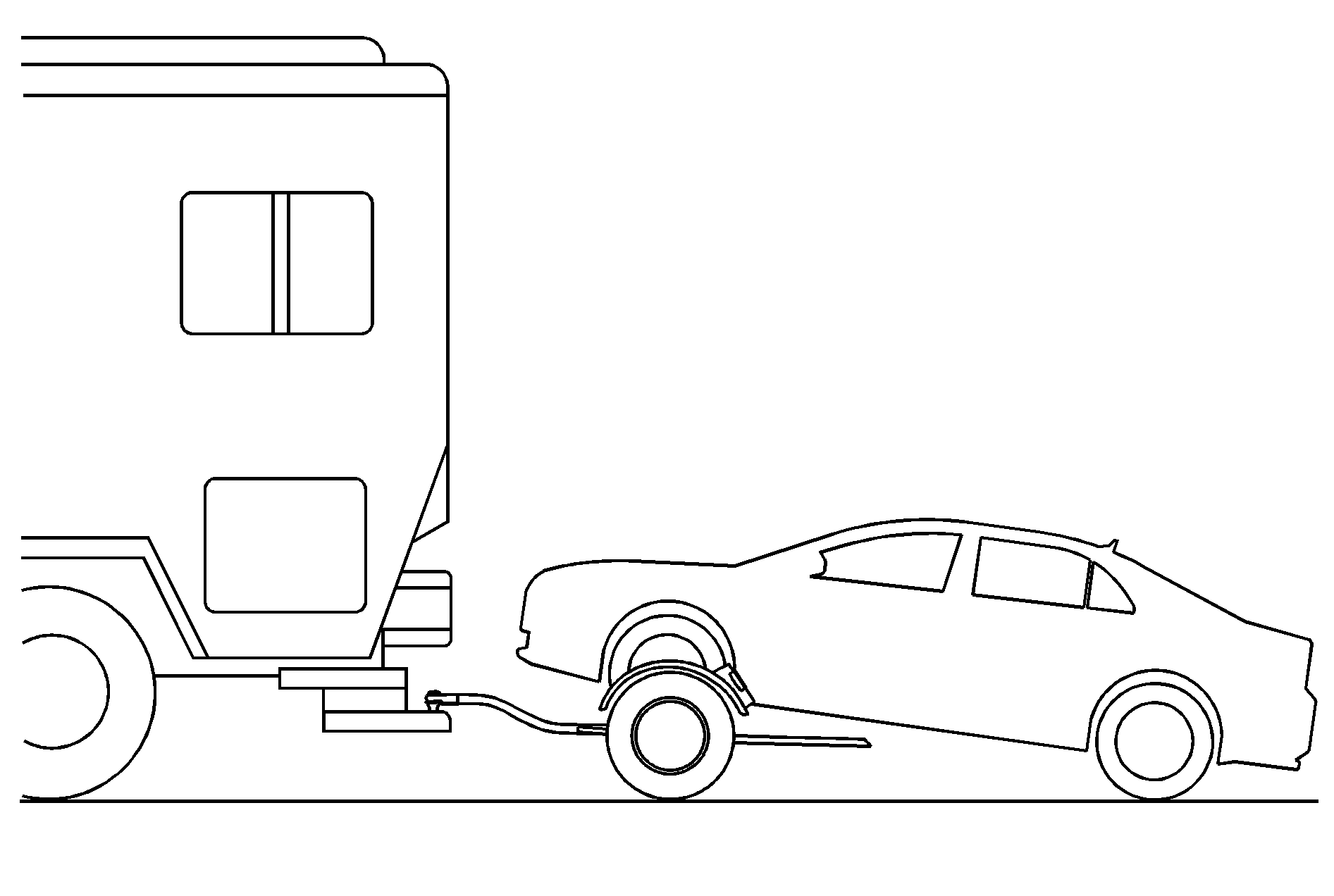Recreational vehicle towing means towing the vehicle behind another vehicle - such as behind a motorhome. The two most common types of recreational vehicle towing are known as dinghy towing and dolly towing. Dinghy towing is towing the vehicle with all four wheels on the ground. Dolly towing is towing the vehicle with two wheels on the ground and two wheels up on a device known as a dolly.
Here are some important things to consider before recreational vehicle towing:
| • | What is the towing capacity of the towing vehicle? Be sure to read the tow vehicle manufacturer's recommendations. |
| • | What is the distance that will be travelled? Some vehicles have restrictions on how far and how long they can tow. |
| • | Is the proper towing equipment going to be used? See your dealer/retailer or trailering professional for additional advice and equipment recommendations. |
| • | Is the vehicle ready to be towed? Just as preparing the vehicle for a long trip, make sure the vehicle is prepared to be towed. See Before Leaving on a Long Trip. |
Dinghy Towing

Notice: If the vehicle is towed with all four wheels on the ground, the drivetrain components could be damaged. The repairs would not be covered by the vehicle warranty. Do not tow the vehicle with all four wheels on the ground.
The vehicle was not designed to be towed with all four wheels on the ground. If the vehicle must be towed, a dolly should be used. See "Dolly Towing" that follows for more information.
Dolly Towing

The vehicle can be towed with its front wheels on a dolly. To tow the vehicle using a dolly:
- Attach the dolly to the tow vehicle following the dolly manufacturer's instructions.
- Drive the front wheels onto the dolly.
- Shift the transmission to P (Park).
- Firmly set the parking brake.
- Clamp the steering wheel in a straight-ahead position with a clamping device designed for towing.
- Remove the key from the ignition.
- Secure the vehicle to the dolly following the manufacturer's instructions.
- Release the parking brake only after the vehicle being towed is firmly attached to the dolly.
